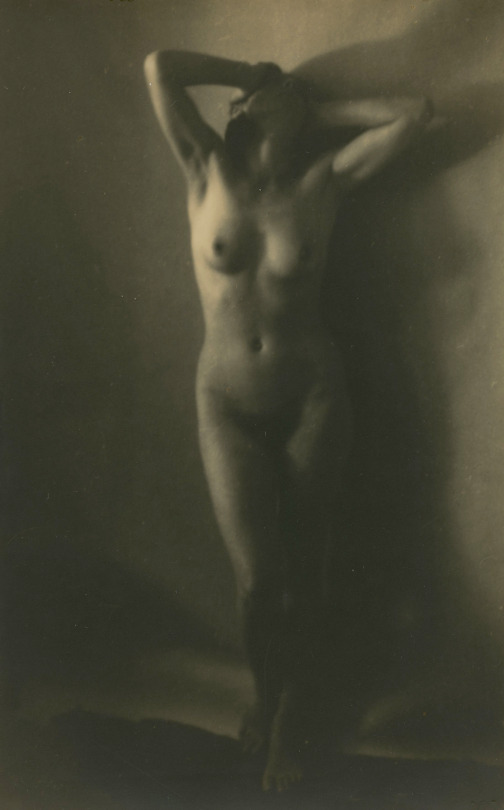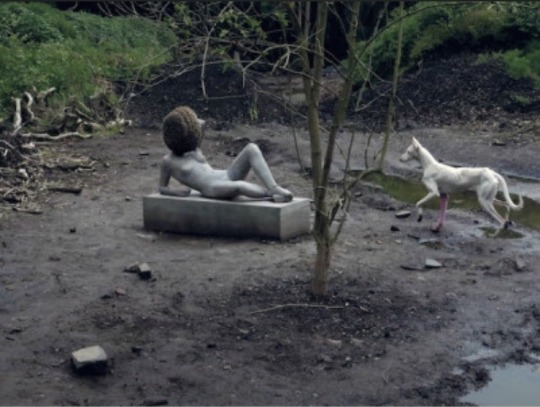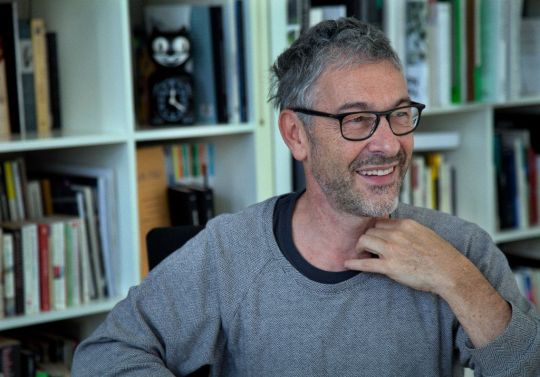#frauenakt
Text

Heinrich Kley (1863-1945) "Frauenakte mit Raubkatze und Schlangen" (undated) Source
“…watercolor, drawing pen and chalk on paper.”
5 notes
·
View notes
Text

Gustav Klimt (1862-1918) - Frauenakt bis zur hüfte, mit geneigtem kopf
Pencil on paper. Drawn c.1917-18.
22.1 x 14.5 inches, 56.2 x 37 cm. Estimate: £40,000-60,000.
Sold Christie's, London, 8 March 2024 for £69,300 incl B.P.
Pick up a pencil.
28 notes
·
View notes
Text

Martin Imboden ~ Frauenakt, Zürich, um 1927. Silbergelatineabzug. | src Sammlung Fotostiftung Schweiz
View on WordPress
(via)
26 notes
·
View notes
Text

Gustav Klimt, Stehender Frauenakt nach rechts, 1902
110 notes
·
View notes
Photo

Victor Surbek (Swiss, 1885-1975), Frauenakt. Oil on canvas, 73 x 62 cm
77 notes
·
View notes
Photo

Rudolf Bolsche (1905 -1965)
“Frauenakt vor einem Fenster” 1926
92 notes
·
View notes
Photo

Cuno Amiet (1883-1919)
Liegender Frauenakt mit Blumen - Reclining nude with flowers (1912)
oil on canvas 100 x 160.5 cm
35 notes
·
View notes
Text


Pierre Huyghe, Untilled (Liegender Frauenakt) [Reclining Female Nude], 2012
The sculpture incorporates a live colony of a gentle breed of bees, which serves as the head of a concrete cast of an idealized female nude
#art#pierre huyghe#contemporary art#artwork#artist#spilled ink#fine arts#installation#sculpture#contemporary sculpture#fine art#art show#moma#venice#biennale#artists#performance#performance art#art persona#art perspective#french#Meta#bees#animals#art history#modern art#sound sculpture#sculptor#art installation#interaction
4 notes
·
View notes
Text

“I’m more interested in looking
for something transitory than
in producing a conclusion.”
Pierre Huyghe
“I’m interested in contingency,” the French artist Pierre Huyghe has said. “Of what is not predictable. Of what is unknown. I think that has somehow been a core of my work.”1 Pursuing interests in contingency and unpredictability, Huyghe creates art forms that incorporate living organisms, such as dogs, turtles, spiders, peacocks, ants, and bees. Over the course of an exhibition, his living works of art grow, decay, and die. Huyghe said, “They are not made for us. They are not made to be looked at. They exist in themselves.”2
Throughout his career, Huyghe has experimented with many mediums and technologies, including film, sculpture, photography, music, and living ecosystems. At the outset of his career, Huyghe collaborated with artists whose work explored human relations and their social context; to describe their interests, the curator and art critic Nicolas Bourriaud coined the term Relational Aesthetics. In the late 1990s and early 2000s, Huyghe’s works often reenacted notable artworks or popular footage from mass media. In Silence Score (English Version), a musical notation of John Cage’s pivotal composition 4'33", he created a readable score for the silent piece using a computer algorithm.
In 1997, with artists Charles de Meaux, Philippe Parreno, and Dominique Gonzalez-Foerster and curators Xavier Douroux and Franck Gautherot, Huyghe cofounded a film production company called Anna Sanders Films. They named the company after a fictional character first developed in a magazine released in 1997. Blanche-Neige Lucie, the company’s first film, stars Lucie Doléne, the voice actor who dubbed the Disney character Snow White in French, and who won a lawsuit against the Walt Disney Corporation for the rights to the reproduction of her voice. The film features Doléne humming the melody of “Someday My Prince Will Come” in an empty film studio, facing the camera, while her story is told through the subtitles. The work explores how a voice can be used to create a character, and who then owns that product.
The Host and The Cloud fuses scripted action and improvised narratives generated by the actors. The yearlong project records theatrical events that took place in an abandoned museum in Paris on three holidays: the Day of the Dead, Valentine’s Day, and May Day. In a variety of fictional settings, 15 actors clad in LED masks perform alongside puppets and animation. These spontaneous elements reflect Huyghe’s interest in contingency and adding dynamic layers to his storylines.
Originally created for Documenta 13 in 2012, Huyghe’s Untilled (Liegender Frauenakt) is a reclining female nude whose head is covered by a live beehive. The work was part of an entire ecological system the artist created in a composting area in Karlsaue Park in Kassel, Germany. In a video Huyghe filmed during the exhibition, his camera captured a wide range of beings at different scales, including minute species that are barely visible to the naked eye. Huyghe aims to “intensify the presence of things, to find its own particular presentation, its own appearance and its own life, rather than subjecting it to pre-established models.”3 With interest in “the transitory state, in the in-between,” his complex worlds blur the boundaries between the natural and the artificial, the physical and the virtual, and the real and the fictional.4 In 2015 and again in 2023, the statue found itself in MoMA’s Sculpture Garden, placed in a new context and in conversation with other works of art. During the summer, the bees travel in and out of the garden to pollinate and build their hive.
Huyghe’s artistic practice reflects his belief that life is in constant flux, and that all beings exist beyond the perceivable realm of human senses and knowledge. By engaging with unconventional materials and technologies, he provides us with a way to see, feel, and experience the wild, untilled world we are living in.
Source: MoMA / Pic: YBCA
6 notes
·
View notes
Text






Wat? Maurice Drouard (1909), Diego Rivera(1914), Chaïm Soutine (1915), Juan Gris (1915), Mädchen mit einer gestreiften Bluse (1917) en Liegender Frauenakt auf weissem Kissen (1917)
Waar? Tentoonstelling Modigliani, Moderne Blicke in Museum Barberini, Potsdam
Wanneer? 12 augustus 2024
Vandaag verlaat ik de Duitse hoofdstad voor een uitstapje naar Potsdam. Daar bevindt zich Museum Barberini. Tijdens mijn laatste bezoek zag ik daar een geweldige tentoonstelling van het abstracte werk van Gerhard Richter. Dit keer gaat het er wat figuratiever aan toe met werk van Amedeo Modigliani (1884-1920). Ik heb natuurlijk vaker werk van hem gezien, maar echt goed bekend ben ik er niet mee. Deze expositie biedt de mogelijkheid mijn kennis wat op te vijzelen.
In 1906 verhuisde Modigliani naar Parijs, toen de culturele hoofdstad van de wereld. Hij ontmoette er collega-kunstenaars als Kees van Dongen, Juan Gris, Maurice Utrillo en Pablo Picasso. Hij liet zich beïnvloeden door de verschillende kunstenaars, maar zonder zijn eigen identiteit te verliezen. In het portret van beeldhouwer Maurice Drouard herkennen we bijvoorbeeld invloed van de blauwe periode van Picasso. Modigliani schilderde in deze periode veel portretten van vrienden uit het kunstenaarsmilieu. Zo vereeuwigde hij Diego Rivera, de echtgenoot van Frida Kahlo, die in het voorjaar van 1914 exposeerde in Parijs. Ook de joodse kunstenaar Chaïm Soutine werd door Modigliani geportretteerd. Hij bracht Soutine in contact met zijn kunsthandelaar Léopold Zborowski. Spoedig vertegenwoordigde die ook Soutine. Juan Gris, een van de grondleggers van het kubisme, betrok vrijwel gelijk met Montigliani Bateau-Lavoir, een verwaarloosd pand in Montmartre waar veel kunstenaars ruimte huurden. Ook van Gris maakte Montigliani een portret.
In Montparnas woonden vrouwelijke beeldhouwers, schilders, modeontwerpers en schrijvers die vanuit verschillende landen naar Parijs waren gekomen om onafhankelijk en onconventioneel te kunnen leven. Er ontstond een nieuwe beeld van de vrouw: ‘La Garçone’: de mannelijke vrouw. Modigliani is een van de eersten, en zeker de eerste man, die het nieuwe beeld van de ‘femme garçonne’ (jongensachtige vrouw) weergaf: zelfverzekerd en onconventioneel. Een voorbeeld is het portret van een meisje met gestreept hemd. Deze jonge vrouw lijkt op schilderes Renée Kisling. Ook zij kleedde zich in een kort hemd en stropdas en droeg haar haar jongensachtig kort als teken van haar emancipatie.
In zijn schilderijen van naakte vrouwen combineerde Modigliani traditionele en moderne elementen. Hoewel de houding van de vrouwen doet denken aan de Venussen van de renaissance, zijn het zelfverzekerde moderne vrouwen. In 1917 leidde de eerste en enige solotentoonstelling van de kunstenaar in Galerie Berthe Weill tot een schandaal. Op de eerste dag, een paar uur nadat de deuren waren geopend, moest van de politie een naaktschilderij uit de etalage worden gehaald. Een mythe wil dat de politie de hele tentoonstelling sloot, maar dat is niet waar. Nu werden naakten in deze tijd regelmatig op tentoonstellingen getoond, maar de wijze waarop Mondigliani ze weergaf was controversieel. Hij schilderde za in close up, met welgekozen uitsneden. Ook het feit dat de geportretteerde vrouwen zelfbewust en schaamteloos de beschouwers aankeken zal hebben bijgedragen aan de verontwaardiging.
0 notes
Text

M. Lambert :: Frauenakt gebeugt, 1920er Jahre | Female nude bent forward, 1920s | src Koller Auktionen 2018
view on wordPress
(via)
6 notes
·
View notes
Text

Gustav Klimt, Stehender Frauenakt nach links, Frauenakt von vorne
40 notes
·
View notes
Text

Hedwig Jaenichen-Woermann (* 1. November 1879 in Hamburg; † 22. Dezember 1960 in Wustrow) Frauenakte/Female nude scroll painting with fabric and gold paint on linen, 1928.
Hedwig Woermann lived in Worpswede for a few years, then studied in Paris before settling in the Ahrenshoop painters' colony in Wustrow in 1919 - surrounded by numerous artist colleagues. She prefers large-format and simplistic representations. The scroll paintings occupy a special place in her work. Patterned silk often forms the painting surface and is thus incorporated into the image design. The present work shows two women in front of a window with a view of the sea at night. The depiction of the body, jewelry and negligee, created in contrast to the background with fine brushstrokes, gives the painting a decorative touch that is further emphasized by the gold-colored border
0 notes
Text

Pierre Huyghe’s sculpture Untilled (Liegender Frauenakt) [Reclining Female Nude], 2012, incorporates a live colony of a gentle breed of bees, which serves as the head of a concrete cast of an idealized female nude
(Jun 16–Aug 19, 2015 MoMA)
0 notes

